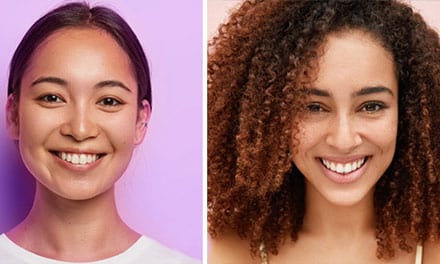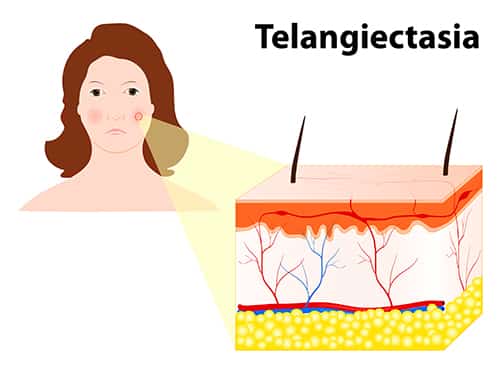

Telangiectasias, commonly known as ‘spider veins’ are dilated or broken blood vessels near the surface of the skin. We can often see these on the face – on the nose, cheeks and chin, but they can also appear on other parts of the body, such as the legs. Often red, pink or purple in appearance, they can cause pain and itching, as well as self-consciousness in some who have them.
At her office in Manhattan, Dr. Ellen Gendler offers laser and light treatments for telangiectasias. As a board-certified dermatologist and leading authority in cosmetic dermatology, she has helped hundreds of patients reduce the appearance of broken blood vessels through expert care and personalized treatment plans.
There are many causes of telangiectasias – it can be a skin condition like rosacea, or, much less likely, an underlying medical condition such as scleroderma, dermatomyositis, or lupus that brings them out. Sometimes the cause is a genetic predisposition, age, or even pregnancy. However, many cases can also be attributed to chronic exposure to the sun or extreme temperatures, because the majority of them appear on parts of the body that are more often exposed to sunlight.
Often, laser treatments are used to address damaged, broken blood vessels. As part of your consultation with Dr. Gendler, she will assess your skin and the areas of concern, and recommend the most appropriate treatment for these. This may include:
As the name suggests, targeted lasers are used to heat the blood vessels, which causes them to close up and reduce in appearance, or even disappear. These treatments are often used for individual veins, as the laser can be precisely targeted to eliminate these vessels.
IPL (intense pulsed light) treatments send pulses of light into the skin, with the wavelength of light able to be adjusted to treat different skin concerns. This treatment is generally used for areas of generalized redness and irregular pigmentation, as the light used here is more diffused than targeted lasers.
All of these are safe and effective treatments, as the laser devices Dr. Gendler uses are FDA-approved and do not damage other parts of the skin or tissue, and while damaged vessels are sealed off, blood flow is not restricted as it finds new pathways over time.
Anyone with telangiectasias is a possible candidate for laser or light treatments. However, laser treatments may not be suitable for those with active acne, people who are pregnant, taking certain medications such as isotretinoin, and those with very dark skin tones. If Dr. Gendler determines that laser treatment is not appropriate for you or for the area affected, she will suggest an alternative treatment option, such as sclerotherapy.
When it comes to the unique nature of the appearance of telangiectasias, and almost all skin concerns, Dr. Gendler takes the utmost care in listening, asking questions and providing honest and sage advice to all her patients. Your personalized treatment plan from Dr. Gendler will include treatment recommendations, as well as recommendations on how to effectively treat and manage telangiectasias at home.
After treatment with Dr. Gendler, you’ll leave her New York office looking and feeling refreshed and rejuvenated. With top-of-the-line equipment, a welcoming, modern office and her years of experience and specialised expertise, Dr. Gendler can help you both look and feel great.
For more information about telangiectasia treatments in New York City, contact Gendler Dermatology today at (212) 288-8222 to schedule a consultation.
Laser treatments can reduce the appearance of telangiectasias, sometimes permanently. However, you may need a number of treatments to manage your telangiectasias.
People often compare the feeling of laser treatments to the feeling of having an elastic band snapped against the skin. It is not painful, but can cause slight discomfort. A topical anesthetic is often applied before treatment to reduce discomfort.
Any activity that triggers blushing or redness in the face can cause telangiectasias to worsen. While different for everyone, common triggers can include sun exposure, extreme heat or cold, strong wind, rapid temperature changes, alcohol consumption, smoking, spicy foods, or products that cause irritation of the skin.
As it is for many concerns we have about the skin, it is important to protect your skin by regularly using sunscreen, and wearing sunglasses and a hat when outside in the sun. Use mild cleansers and products on your skin, try to avoid extremes in temperature (hot and cold), and avoid using topical steroids for more than one or two weeks at a time.
Make your skin a priority with our leading Upper East Side Medical and Cosmetic Board-Certified Dermatologists.
Book Now